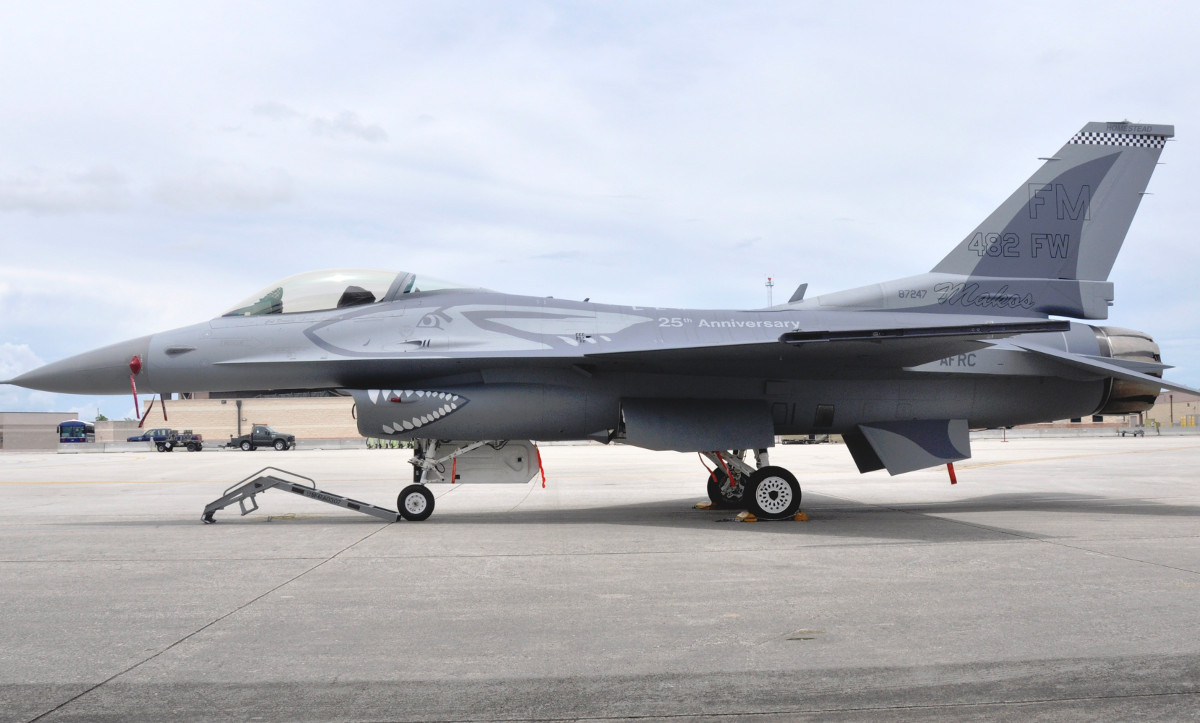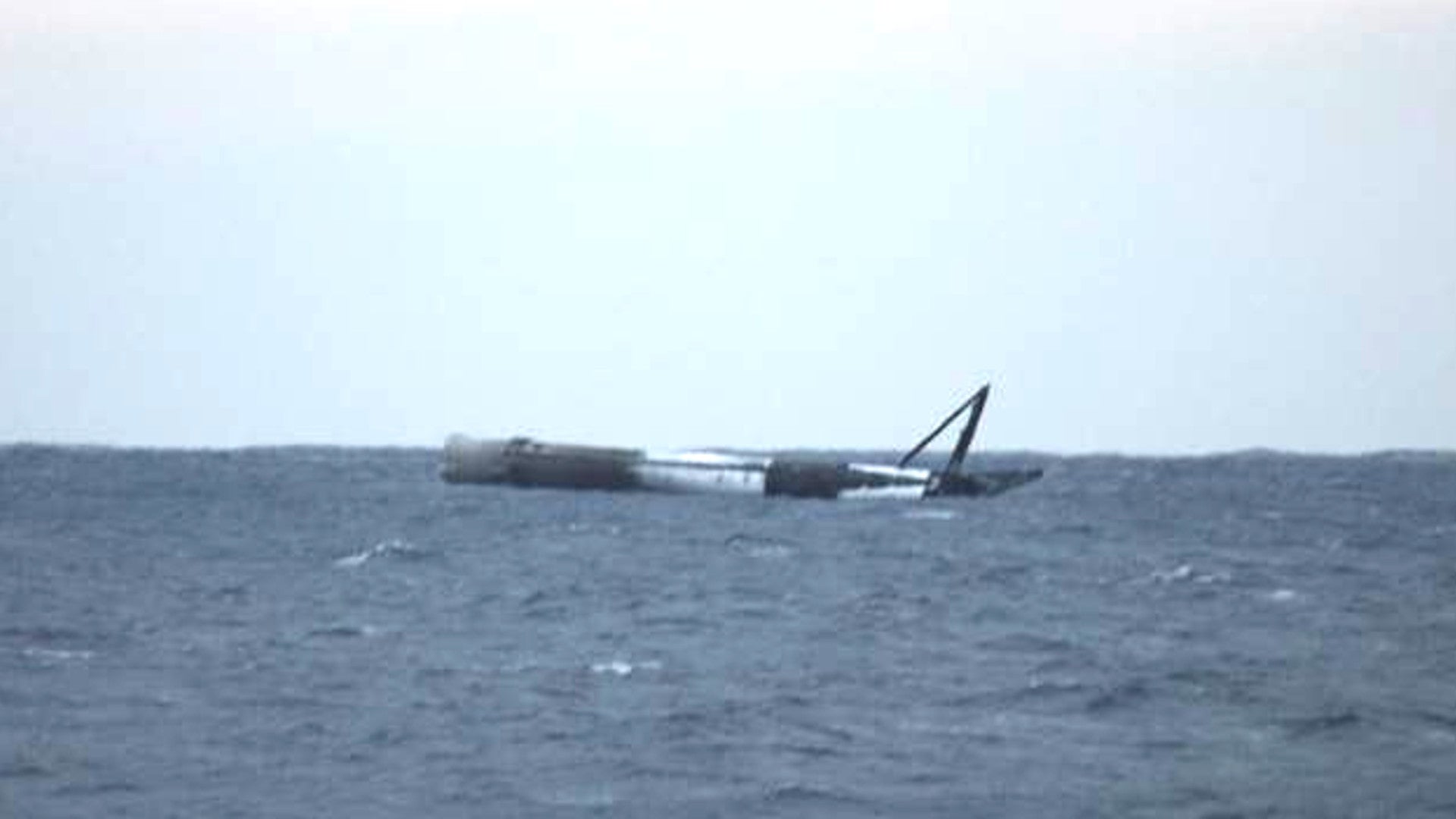The U.S. Air Force has reportedly conducted an air strike to destroy one of SpaceX’s Falcon 9 boosters, which came down off the Florida Coast after a test. The space launch firm had previously said it would try to tow it back to shore, but it may have become an immediate danger to maritime traffic or sites along the coast, prompting the service to take action.
AmericaSpace first reported on the possible strike on Feb. 8, 2018, citing anonymous sources, but said the Air Force had declined to comment at all, directing all questions to SpaceX. NASASpaceFlight.com subsequently said it had confirmed the report, but did not say what Air Force assets had participated in the mission.
The Falcon 9 booster had been drifting in the Caribbean since Jan. 31, 2018, after it lofted the SES-16/GovSat-1 communications satellite into geostationary orbit after a launch from Space Launch Complex-40 at Cape Canaveral Air Force Station in Florida. The system has the ability to then land upright so the company can reuse it for future launches. In this instance, though, it made a high-stress descent over water, an experiment to collect research data that engineers expected would break it up or otherwise damage it enough that it would sink harmlessly to the bottom of the ocean.
“This rocket was meant to test very high retrothrust landing in water so it didn’t hurt the droneship, but amazingly it has survived,” Elon Musk, founder, CEO, and leader designer at SpaceX, Tweeted out afterwards. “We will try to tow it back to shore.”
As AmericaSpace noted, this indicated that the firm likely did not have a plan in place about what to do if the booster came down largely in one piece. Depending on the exact condition of its various components, including compromised composite overwrapped pressure vessels, or COPVs, it could easily have turned into a serious hazard.
On Feb. 7, 2018, SpaceX’s Go Searcher offshore supply vessel, which supports the company’s remotely-operated “autonomous spaceport” drone launching pads, as well as other over-water activities, returned to Port Canaveral in Florida without any sign of the booster. This in turn prompted speculation that the plan to tow it back had failed.
We don’t know what aircraft make have taken part in any strike on the Falcon 9 booster, but there are are number of Air Force units within Florida that could have carried out the mission. There are Air Force Special Operations Command AC-130 gunships at Hurblurt Field along the Florida Panhandle and the Air Force Reserve has F-16 multi-role fighter jets with the 482nd Fighter Wing, also known as the Makos, at Homestead Air Reserve Base at the very southern end of the state.
The Florida Air National Guard has F-15C Eagles at Jacksonville Air National Guard Base, attached to Jacksonville International Airport, as well. Those fighter jets are geared toward air-to-air combat, but could have strafed the booster with their 20mm Vulcan cannons. Air Guard F-15s conduct over-water cannon firing drills periodically to keep pilots familiar with employing the weapon with live ammunition.
There’s variety of other air-to-ground capable test aircraft assigned to the 96th Test Wing at Eglin Air Force Base, which also hosts a number of weapon testing organizations, and the Air Force rotates B-1 bombers through deployments to Key West, though primarily for unarmed counter-drug missions. The Air Force or Air National Guard could have deployed other fighter or ground attack aircraft from elsewhere in the southeastern United States, as well, as it would’ve offered the chance for a realistic over-water training exercise.
Another possibility is that the Air Force actually sent an explosive ordnance disposal team to either neutralize an immediate danger or rig the booster up with explosives to sink it. If the booster was too unstable for this kind of direct intervention, that could explain why the service chose to go with an air strike, as well.

Another U.S. military service could have been the one to actually carry out the strike, too. The U.S. Navy has P-3C Orion and P-8A Poseidon maritime patrol aircraft situated in Florida and the service routinely deploys F/A-18C/D Hornet and F/A-18E/F Super Hornet fighter-bombers to Naval Air Station Key West for regular training.
Armed U.S. Army or Navy helicopters could have been yet another option, depending on how far away from shore the Falcon 9 booster had landed. U.S. Navy or Coast Guard ships could have finished it off, too. That latter possibility is something that’s actually happened before.
After the 2011 Tōhoku earthquake off Japan, and the devastating tsunami that followed, a number of boats ended up adrift in the Pacific without crews to guide them back or any easy way of tracking their positions. The owners of the fishing boat Ryou-Un Maru assumed she had sunk in the disaster, but in March 2012, she reappeared hundreds of miles from home, derelict, off the coast of Canada.
After she floated into American territorial waters the next month, the U.S. Coast’s Guard’s cutter USCGC Anacapa went out to assess the situation, determined the ghost boat was an immediate hazard to maritime traffic in the area, and subsequently sunk the trawler with fire from her Mk 38 25mm cannon.

We have reached out to the Air Force and other U.S. military agencies and we will be sure to update this post if any additional information becomes available.
Contact the author: joe@thedrive.com
